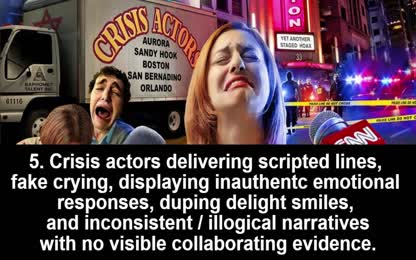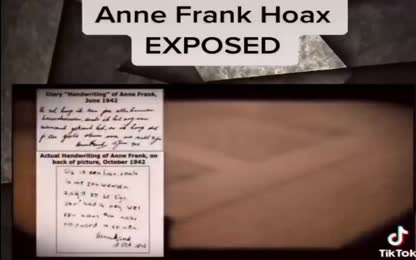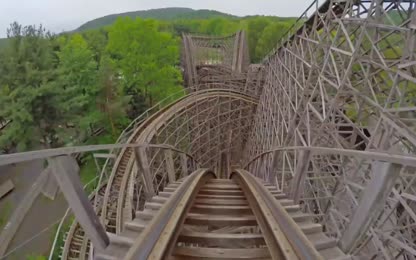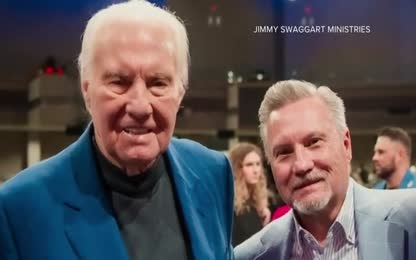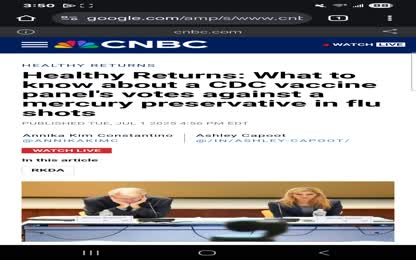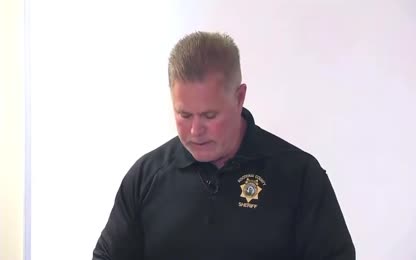Advertisement
JFK HOAX & The Fake Zapruder Film
On November 22, 1963, U.S. President John F. Kennedy was shot and killed while traveling down Elm Street, Dallas, Texas, in an open car in a motorcade. Everyone agrees about that.
Many people think that agencies of the U.S. Government have lied about or covered up details of the assassination.
For three decades, people thought the best proof of foul play was a 27-second home movie of the assassination taken by a Dallas dressmaker, Abraham Zapruder. It shows JFK’s head being blasted backwards and to his left:
This seems to tell us that the shooter was in front of the car on the right side, on the "grassy knoll" (small hill) next to Elm Street. But the U.S. Government insisted that JFK was shot by just one man hiding in a building far behind the limousine.Things get more complicated when we look at the film frame-by-frame. As the bullet hits, JFK’s head first moves forwards:
This makes things confusing. There seemed to be three possible explanations:
1. He was hit by two bullets at almost the same time (one from behind and then one from the front).
2. He was hit from behind, and a jet of brain matter exploding from the front caused his head to recoil backwards.
3. He was hit from behind and some sort of muscle reaction caused his head to fly backwards.
People tried to figure this out for three decades. Instead of clearing up the mystery, Zapruder’s film just made things more confusing.
In the 1990s, researchers started to realize that there was a fourth possible explanation. Zapruder’s film might also be a part of the lies and cover-up that agencies of the U.S. Government had weaved around the JFK assassination!
Scientists examined the Zapruder film. They found that, while most of it looks completely genuine, some of the images are impossible. They violate the laws of physics. They could not have come from Zapruder’s home movie camera.
Zapruder’s film is a very good forgery. It is almost perfect. Some mistakes took almost 40 years to find.The scientists also proved that Zapruder’s film was not just changed a little bit. The whole film is a fake!
A movie film is just a strip of little photos ("frames"). The fake film was made by cutting and pasting real photos and film frames together to make new frames.
The HOAX of the century: Faking the zapruer film.
http://jfk.hood.edu/Collection/Weisberg%20Subject%20Index%20Files/L%20Disk/Livingstone%20Harrison%20Edward%20Killing%20Kennedy/Item%2005.pdf
John F. Kennedy was never killed.
https://153news.net/watch_video.php?v=H2S62NYM4HRS
- Category: False Flag / Hoax ,Staged Event / Media Event ,John F. Kennedy Assassination,Movie Set
- Duration: 09:59
- Date: 2023-01-06 05:47:10
- Tags: jfk, fake, zapruder, film
12 Comments
Video Transcript:
One of the major pieces of evidence in the assassination of John F. Kennedy, an 8-millimeter home movie, taken by a local businessman named Abraham Zapruder. The Zapruder film was featured in Life magazine and became a focal point in the Warren Commission investigation. Does the Zapruder film we see today accurately represent the true events of November 22, 1963, or has it been altered as many researchers have suggested in the following analysis we shall attempt to find out. As you watch the film you can see how the random motion of the camera makes analysis of the events difficult. Our first step is to remove as much of this extra motion as possible to focus solely on the movement of the limousine and the people in the scene. You can see that once the limousine is stabilized, it is easier to follow the movement of the people in the car and on the lawn. Previous researchers have stabilized the limousine as well to focus solely on the actions of Kennedy in the car. Now we're going to do something different. The first bystanders we see on the lawn seem to be looking not at the limousine which is passing them, but behind it as if it has not reached them yet. This odd reaction would seem to support the idea that the background action is out of sync with the limousine. Let's take a look at the way separate layers could be combined in a 1963 era film using either an optical printer or an animation stand. Both use the same principle. The background bystanders on the lawn would need to be separated by masking out the limousine. This would leave a blank area in the foreground. In order to retime the background without this blank area showing, the background could be enlarged and reframed to create an overlap area. Then the limousine layer with the background masked out could overlap this new background and be retimed and positioned independently, allowing its speed to be controlled as well. These layers join together form what is called a composite. The object of the object could then be applied to this composite to create the final effect. It has been argued by John Castella, PhD, that the Stemens-Freeway sign which passes in front of the limousine has been fabricated. As detailed analysis shows how the sign does not exhibit the same lens distortion or a line in perspective with other objects in the scene. If the sign were a separate layer on top of the limousine, this would be the perfect way to cover the change between real and retimed footage. We also see Mary Mormon standing with her friend in the red coat, clearly on the lawn, and according to her testimony, she stepped forward onto the street when she took her picture as Kennedy was shot. If the long footage has been retimed, we may actually be seeing an earlier moment before she stepped forward. Another unsettling aspect to the bystanders is their unusually large size in relation to their distance from the limousine and its occupants, as if the entire background had been blown up. This again supports the theory that the background layer has been resized separately as the car passes the last couple on the lawn. The man's legs go from a position of standing feet together to standing wide apart in one frame. That's an 18th of a second, which is a near physical impossibility not to mention strange. It is, however, the logical point to cut from the retimed background back to real footage as the car speeds away. Here's an example of bystanders showing motion blur. Notice their shadows on the lawn are also blurry as they naturally would be. However, just a few frames later, we see this. The bystanders are even more blurred, yet their shadows are impossibly sharp. This is a clear example of retouching, and further proof that the background has been altered. Although the lamp post passes in front of the limousine, it exhibits no movement in relation to the far background as it should, being an object much closer in three-dimensional space to the panning camera. It also displays an odd, blurred extension on its lower left side, where it passes in front of the limousine, giving the lamp post an artificial cut-out appearance. This further supports the theory that the limousine layer has been separated from the background lawn. Therefore, the lamp post would need to be cut out as well, to overlay the limousine. In consistencies regarding the actions of the people in the limousine, have been a point of discussion among researchers. For example, the driver turns his head twice to look behind, and then forward, faster than physically possible, which seems to indicate removed frames. The head turns correspond to two points at which the passengers lurch forward, as if the car has break suddenly. Although the car shows only gradual slowing compared to the background, the second of these break seems to be strong enough to throw connolly, and his wife completely to the floor of the car, and the driver and front passenger forward as well. These examples alone point to significant retiming of the limousine speed. The sprocket hole area on the left side of the frame reveals an interesting clue, when the motorcycle officer momentarily pulls up from behind the limousine at the same time as the second passenger lurch. This seems to indicate either the motorcycle suddenly sped up, or, more likely, the limousine suddenly break, and the officer was not prepared for it and breaked later, having the effect of pulling up alongside the limousine. Yet, the film does not seem to show the limousine slowing or stopping, again supporting the theory that the timing has been altered. This brings us to our final question. Why would someone do this? As mentioned before, the passengers in the limousine lunge forward at one point, as if the car has break suddenly. Many witnesses at the time testified that they saw the limousine slow or stop at the time Kennedy received the fatal headshot. Imagine the outcome of the Warren Commission investigation if they had seen a film in 1963, showing the secret service driver bringing the presidential limousine to a complete stop. Other shots had been fired to allow the assassin a clear, unmoving target for the fatal headshot. Who would they investigate then? A lone gunman? We began this presentation asking the question. Does the separator film today accurately represent the true events of November 22, 1963? Our answer is no. Let's review our findings. The pasted freeway saw, the large bystanders, the painted shadows, the cut out lamp post, the lurching passengers, the breaking motorcycle. Once you have seen this evidence, it's difficult to watch the separator film and see it as anything but a fabrication. Those who created it never wanted us to see even this much, but now it is too late. We know that the film was altered and re-timed before the public saw it, most likely to hide the stopping of the limousine. Once this fact is accepted, an enormous house of cards begins to fall. If the secret service driving the limousine was involved, who else was involved? If the secret service, FBI or CIA, who all had possession of the originals of Prudor film, were involved in its alteration, what does that mean? If time-life, which immediately bogged the rights to the film and then refused to show it for decades, was involved, what does that mean? If the Warren Commission based their report on the timeline of a false separator film, what does that mean?










 Donate
Donate

